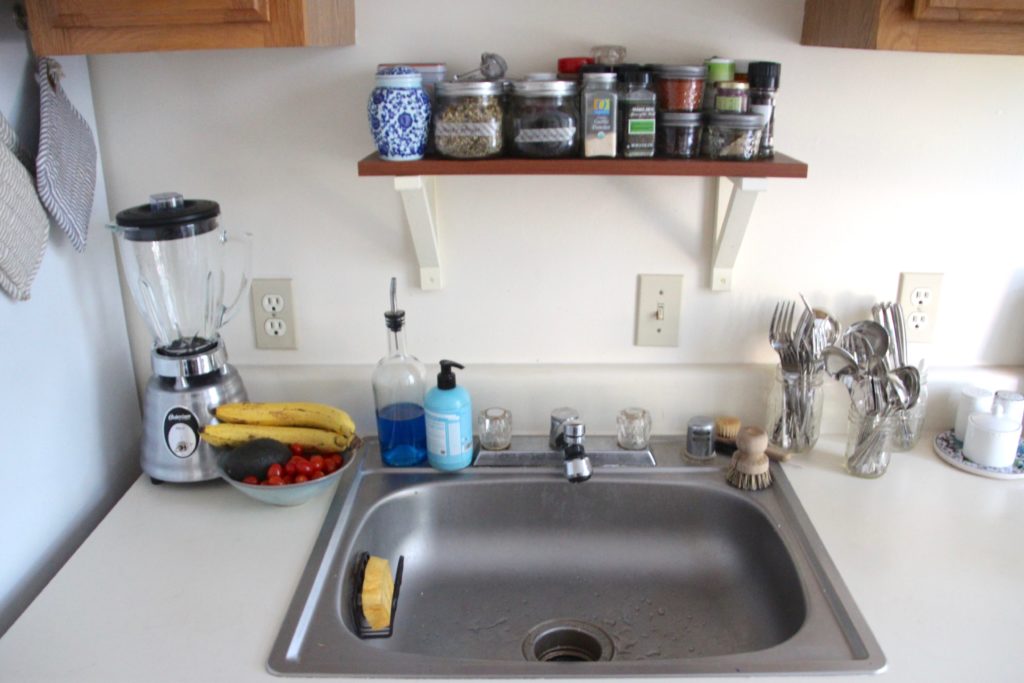#5: who you emulate
I love a good blog about simple, sustainable living. Call it inspiration, call it entertainment, call it good old fashioned peek-over-the-fence voyeurism, but I love reading about the ways other people and families have found to minimize their footprint on the planet and live with less.
It was wonderfully encouraging, for example, when we moved into a one-bedroom apartment with our son, to see how other families with children make small spaces work. What seemed impossible when we first considered it because a home that we loved and were heartbroken to leave.
But from time to time, I will run into a blog post or magazine article that makes me clench my jaw and shake my head and roll my eyes. And it’s almost always due to class and money.
I’ve written about the socioeconomics of living small before. And it’s no secret that the whole minimalism movement is directed primarily at middle-class families who have the option to buy more but find value in choosing less. That’s not inherently a bad thing. I think it is, overall, a very good thing for people who have resources to be careful and considerate about how those resources are used.
But it always rubs me the wrong way when I read about “tips for living with less” that essentially boil down to “things people without a lot of money do all the time because they actually can’t afford to not do them.”
I didn’t grow up poor, but with parents who worked as a theologian and a painter/editor, we lived quite frugally. A few of the things my family did on a regular basis to save money include:
- reuse tinfoil and sandwich bags
- wear clothes multiple times before washing them
- hang laundry to dry outside or on a drying rack
- shop at thrift stores (or don’t shop at all)
- get hand me downs from neighbors/cousins
- sew clothing or build household items
- use cloth diapers
- make gifts, rather than buying them
- keep a bucket in the tub during showers, then use the water in it to flush the toilet
- eat vegetarian several days a week
- save and reuse wrapping/tissue paper
- wrap gifts in old maps/paper shopping bags/sheets
All these things are environmentally friendly and contribute to a minimal lifestyle. And yes, my parents did them for those reasons (long before sustainability was trendy, as I pridefully like to tell others). But mostly, we did them to save money.
And yet, that’s a pretty standard (and pretty good!) list for how to start living more simply and sustainably, isn’t it? I’m pretty sure I’ve seen that list on multiple blogs.
And that’s because, for some people, these ideas are new. I fully realize there are people to whom it would never occur to wash out a plastic sandwich bag and reuse it, because they’ve literally never seen that done, or who didn’t know things like drying racks existed before they saw them in someone’s Scandi-inspired home tour.
That’s no one’s fault. Or at least, it’s not an individual fault but a cultural one.
But I do wish more people writing about minimalism would acknowledge that most of their ideas aren’t new, really — just new to some people. That more of us would remember, as we go through the work of simplifying our lives and minimizing our impact on the earth, that the people we’re emulating aren’t always bloggers with beautifully curated Instagram grids. Sometimes, the people we’re emulating are the neighbors down the street who don’t have the privilege of thinking about minimalism in the first place.
(And maybe what I’m really writing about it a message to myself: a reminder that the best people for me to emulate might not be the ones I find on the internet, but the parents who raised me, reused wrapping paper, shower bucket, and all.)



Recent Comments